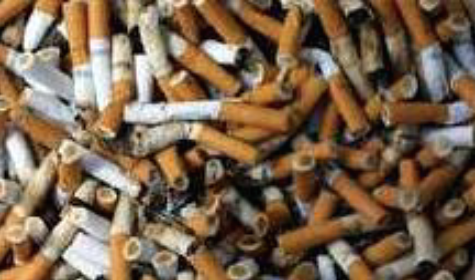Click here to download the PDF version.
WHO uses Hookah?
- Hookah is a popular method of smoking flavored tobacco among adolescents and young adults. Some believe this form of smoking tobacco is less harmful than smoking cigarettes; however, research shows otherwise.1,2
 WHAT is Hookah?
WHAT is Hookah?
- The hookah, or waterpipe, indirectly heats tobacco using burning embers or charcoal. The smoke is filtered through a base full of water and then drawn through a rubber hose to a mouthpiece.1
- Flavor is created in one of two ways:
•Pre-packaged „shots‟ of flavored tobacco1
•Mixing the water with other liquids such as wine1
- Hookah bars, cafés, and lounges have become more popular in recent years with the rise in smoke-free laws. Marketing targets young adults, professionals, and college students.1
 WHY is Hookah Smoking So Dangerous to the User?
WHY is Hookah Smoking So Dangerous to the User?
- A typical hour-long hookah smoking session involves breathing in 100-200 times the volume of smoke inhaled in a single cigarette. This amount is roughly equivalent to smoking 100 cigarettes.2
- Mainstream smoke from waterpipes contains a significant amount of tar, nicotine, carbon monoxide, and heavy metals.3,4
- Compared to cigarettes, waterpipe users inhale higher carbon monoxide levels and 1.7 times the dose of nicotine.4
WHY is Secondhand Smoke from Hookah So Dangerous?
- Waterpipe smoking emits dangerous levels of fine particle air pollution,5 and carbon monoxide from the heat source (often charcoal).
- In a study of a Hookah lounge in Lexington, KY, secondhand smoke from waterpipe smoking created high fine particulate concentrations (116 µg/m3 - 199 µg/m3), 3- 6 times the National Ambient Air Quality Standard for outdoor air (35 µg/m3).6
HOW to Address Hookah Bars in Smoke-free Laws
- Hookah bars or lounges are often exempt from smoke-free laws. For example, hookah bars may qualify for a “retail tobacco establishment” exemption by meeting the definition related to percent of total annual revenues generated by the sale of tobacco for consumption on the premises.1 Hookah smoking may also be outside the law‟s definition of smoking.
- Public health advocates need to address hookah bars in new laws, regulations, and if possible, amend current laws to strengthen definitions and eliminate loopholes such as tobacco retailer exemptions.1 Use the Americans for Nonsmokers‟ Rights model ordinance definition of smoking.7
Click here for the PDF.
- American Lung Association. Tobacco Policy Trend Alert: An Emerging Deadly Trend: Waterpipe Tobacco Use [Report];2007.
- World Health Organization. Waterpipe Tobacco Smoking: Health Effects, Research needs and Recommended Actions by Regulators: WHO Study Group on Tobacco Product Regulation;2005.
- Shihadeh A. Investigation of mainstream smoke aerosol of the argileh water pipe. Food Chem Toxicol. Jan 2003;41(1):143-152.
- Eissenberg T, Shihadeh A. Waterpipe tobacco and cigarette smoking: direct comparison of toxicant exposure. Am J Prev Med. Dec 2009;37(6):518-523.
- Maziak W, Rastam S, Ibrahim I, Ward KD, Eissenberg T. Waterpipe-associated particulate matter emissions. Nicotine Tob Res. Mar 2008;10(3):519-523.
- Lee K, Bucholtz C, Robertson H, Vogel S, Hahn E. Indoor air quality in a Hookah Lounge: Is waterpipe smoking (hookah) related to indoor air pollution?2008:1-4.
- Americans for Nonsmokers' Rights Foundation. Model Ordinance Prohibiting Smoking In All Workplaces and Public Places (100% Smokefree) 2011, March; https://www.no- smoke.org/pdf/modelordinance.pdf. Accessed January 13, 2012.